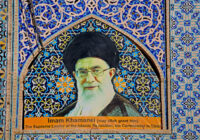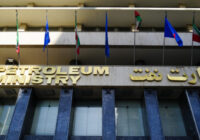The decision to ban Instagram by Iranian authorities aims to stifle dissent, but not the kind you think.
Instagram will soon be joining an ever-growing list of social networking sites and apps that Iran has filtered over the years. It began with the blocking of Twitter, Facebook and YouTube in the face of the 2009 post-election violence that plagued the country. The shuttering of these websites was seen as a means of curbing dissent and protecting the population from being swayed or influenced by outside elements.
The bans have remained in place ever since, despite promises to remove them. The main argument presented is that these social media platforms expose young minds in Iran to “immoral” content that goes against the culture and religious make-up of Iranian society. (Never mind that Iranian officials themselves continue to operate their own pages and profiles on all these banned platforms.)
Last year, Iran ushered in another ban. This time it was the messaging app Telegram. Telegram’s end-to-end encryption was also viewed by authorities as a potential security risk, especially at the turn of 2018 when protests once again broke out in Iran. So, left with little choice, the country’s online community looked to Instagram. The use of the platform had been steadily growing in Iran over the years, and the ban on Facebook and Telegram makes it an obvious choice for Iranian netizens. Just as with other social media platforms — blocked or otherwise — anyone who is someone in Iran is now on Instagram. The level of engagement is also quite astounding.
National Security Threat?
So after banning Facebook, Twitter, YouTube and Telegram, does Instagram also pose a national security threat to Iran? Instagram is no Telegram. There is no two-way encryption that terrorists can take advantage of as they plan attacks or dissidents can use to surreptitiously coordinate their activity. And while it will be naive to ignore certain accounts and figures who have used Instagram — some for years — to disrupt Iranian politics and popular opinion from outside the country, they don’t carry the influence that would worry authorities in Iran enough to take such a bold step.
What worries Iranian authorities is not outside influence or forces. It is the platform that Instagram is providing for new grassroots movements within the country that threaten the old guard. These figures and accounts aren’t the usual dissenters you read or hear about on mainstream media. They don’t protest against the “authoritarian rule of the mullahs” or criticize Iran’s “expansionist policies disrupting the Middle East.” They don’t rally for regime change, but they do pose a greater threat to a generation of political figures within the country who have been in position of power and influence for decades.
These dissenters claim to be loyal to the Islamic Revolution of Iran and the ideals for which it stands. They bring in quotes and old speeches of Ayatollah Khomeini (the founder of the Islamic Republic of Iran), and edicts by the current spiritual leader, Ayatollah Khamenei. They rage against the corruption and nepotism that has embedded itself within the country’s political system and branches of government. These aren’t Iranians sitting thousands of miles away from their home country, funded by obscure foreign elements and organizations calling for the downfall of the regime. These are people who are part and parcel of Iranian society taking ownership of their country and its future.
The Right Audience
Instagram provides them with a platform and an audience at a time when popular concerns aren’t being addressed in the Iranian media or by elected representatives. These voices are reaching greater audiences than ever before by harnessing the various features Instagram has on offer. And what works in their favor is that they don’t need to go providing links and addresses to their pages. The right hashtag with the right photo or video draws in the right audience.
 Lively, and often heated, debates are held through Instagram Live, with hundreds of viewers watching, commenting and posting their questions at the same time. Stories are posted asking for people’s opinions and questions exhibiting a transparent exchange of ideas and views. The issues being raised range from nepotism and corruption to discrimination and education reform. Online users discuss and debate political and social issues, criticizing the government’s actions and hammering out a better alternative.
Lively, and often heated, debates are held through Instagram Live, with hundreds of viewers watching, commenting and posting their questions at the same time. Stories are posted asking for people’s opinions and questions exhibiting a transparent exchange of ideas and views. The issues being raised range from nepotism and corruption to discrimination and education reform. Online users discuss and debate political and social issues, criticizing the government’s actions and hammering out a better alternative.
One Instagram account launched a project of posting videos of ordinary Iranians calling up government and municipal officials demanding they abide by the recently passed legislation that stipulates government employees past retirement age must step down. The page gained thousands of followers in a short span of time.
Another account, belonging to a clergyman, shares posts about corrupt officials in office, creating a conversation around the nepotism and rent-seeking behavior that many ordinary Iranians have been grappling with. He’s faced arrest and intimidation from authorities for recently opposing a university’s development project that resulted in encroachment on a nearby village, but his posts mobilized others to the point that the judiciary had to get involved.
Some famous TV hosts are now conducting live debate sessions on Instagram, tackling the complex issues facing the country and its youth, acknowledging that their television shows are not providing the content that viewers are looking for or can relate to. Such activity is having a direct impact on public opinion and the national debate at a time when people feel that the national media hasn’t necessarily reflected their concerns or aired their voices in the best way. It’s spreading awareness among a population that is heavily involved in its country’s politics. That vacuum left by the traditional media is being filled by Instagram: A place where people are freely talking, posting, commenting and engaging with one another about issues that they feel need addressing in a depoliticized environment — until now.
Simple Labels
The banning of Instagram is a reflection of how policy-makers and relevant authorities are also taking note of this new wave. These voices cannot be silenced with the simple labels of being anti-revolutionary or paid agents of the West seeking regime change. It doesn’t fit their narrative of Iran being controlled by a repressive, totalitarian regime. These voices of dissent in fact take the revolution and its ideals as their motivating factor — a revolution that promised a fair and just system of governance, that spoke of equal rights and an end to political elitism.
These voices, and the platform that Instagram provides them, are a threat to the old guard in Iran who claim to be the protectors of the revolution. They directly challenge this narrative, holding up the hypocrisy with which some of these officials have operated for years, if not decades. And, it turns out, many Iranians agree.
Banning Instagram means stifling these voices. It means making it all the more difficult to have these conversations, debates and exchange of ideas. It remains to be seen when this ban comes into effect. Time will tell what this would mean for those who are fighting for a better and more prosperous Iran.
The views expressed in this article are the author’s own and do not necessarily reflect Fair Observer’s editorial policy.
Support Fair Observer
We rely on your support for our independence, diversity and quality.
For more than 10 years, Fair Observer has been free, fair and independent. No billionaire owns us, no advertisers control us. We are a reader-supported nonprofit. Unlike many other publications, we keep our content free for readers regardless of where they live or whether they can afford to pay. We have no paywalls and no ads.
In the post-truth era of fake news, echo chambers and filter bubbles, we publish a plurality of perspectives from around the world. Anyone can publish with us, but everyone goes through a rigorous editorial process. So, you get fact-checked, well-reasoned content instead of noise.
We publish 2,500+ voices from 90+ countries. We also conduct education and training programs
on subjects ranging from digital media and journalism to writing and critical thinking. This
doesn’t come cheap. Servers, editors, trainers and web developers cost
money.
Please consider supporting us on a regular basis as a recurring donor or a
sustaining member.
Will you support FO’s journalism?
We rely on your support for our independence, diversity and quality.






